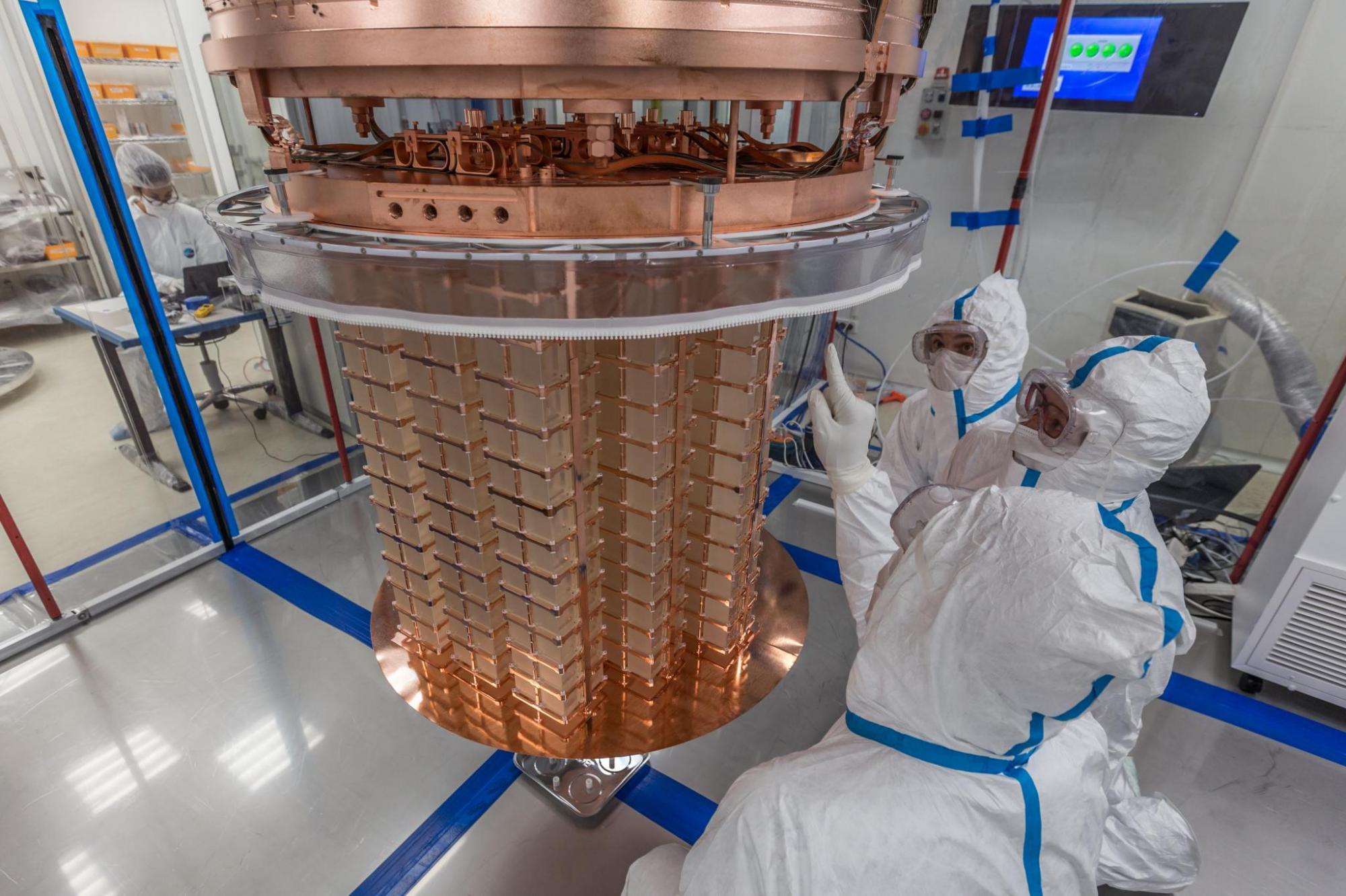 On 23 October, at the Gran Sasso National Laboratories (LNGS) of INFN, the CUORE (Cryogenic Underground Observatory for Rare Events) experiment, the largest cryogenic detector ever built, designed to study the properties of neutrinos, was inaugurated. In the first two months of data collection, the experiment has operated with extraordinary precision, fully satisfying the expectations of the physicists who built it and significantly restricting, already at this very first phase, the region in which to look for the rare phenomenon of double beta decay without neutrino emission, the main scientific objective of the experiment. Detecting this process would make it possible not only to determine the mass of neutrinos, but also to demonstrate their potential nature as Majorana particles, providing a possible explanation for the prevalence of matter over antimatter in the universe. The CUORE detector is a 741 kilogram giant implemented with a technology based on ultra cold cubic tellurite crystals designed to operate at very low temperatures: 10 thousandths of a degree above absolute zero (-273.15°C). Its structure comprises19 towers each consisting of 52 tellurite crystals purified from any contaminants. The most difficult technological challenge faced by the experiment was the implementation of the cryostat, able to keep the 19 towers suspended inside it at a few thousandths of a degree above absolute zero. The experiment works in extremely pure environmental conditions, in particular with very low levels of radioactivity. The cryostat is, in fact, shielded from the shower of particles coming from the cosmos both by the 1400 metres of rock of the Gran Sasso massif and by a special protective shield, made by casting lead ingots recovered from a Roman ship sunk over 2000 years ago, off the coast of Sardinia. CUORE therefore uses a technology unique in the world for unprecedented precision, a result that has required more than ten years of work. The prototype called Cuore-0, consisting of a single tower in operation from 2013 to 2015, preceded CUORE and whose first results were announced in April 2015.
On 23 October, at the Gran Sasso National Laboratories (LNGS) of INFN, the CUORE (Cryogenic Underground Observatory for Rare Events) experiment, the largest cryogenic detector ever built, designed to study the properties of neutrinos, was inaugurated. In the first two months of data collection, the experiment has operated with extraordinary precision, fully satisfying the expectations of the physicists who built it and significantly restricting, already at this very first phase, the region in which to look for the rare phenomenon of double beta decay without neutrino emission, the main scientific objective of the experiment. Detecting this process would make it possible not only to determine the mass of neutrinos, but also to demonstrate their potential nature as Majorana particles, providing a possible explanation for the prevalence of matter over antimatter in the universe. The CUORE detector is a 741 kilogram giant implemented with a technology based on ultra cold cubic tellurite crystals designed to operate at very low temperatures: 10 thousandths of a degree above absolute zero (-273.15°C). Its structure comprises19 towers each consisting of 52 tellurite crystals purified from any contaminants. The most difficult technological challenge faced by the experiment was the implementation of the cryostat, able to keep the 19 towers suspended inside it at a few thousandths of a degree above absolute zero. The experiment works in extremely pure environmental conditions, in particular with very low levels of radioactivity. The cryostat is, in fact, shielded from the shower of particles coming from the cosmos both by the 1400 metres of rock of the Gran Sasso massif and by a special protective shield, made by casting lead ingots recovered from a Roman ship sunk over 2000 years ago, off the coast of Sardinia. CUORE therefore uses a technology unique in the world for unprecedented precision, a result that has required more than ten years of work. The prototype called Cuore-0, consisting of a single tower in operation from 2013 to 2015, preceded CUORE and whose first results were announced in April 2015.






